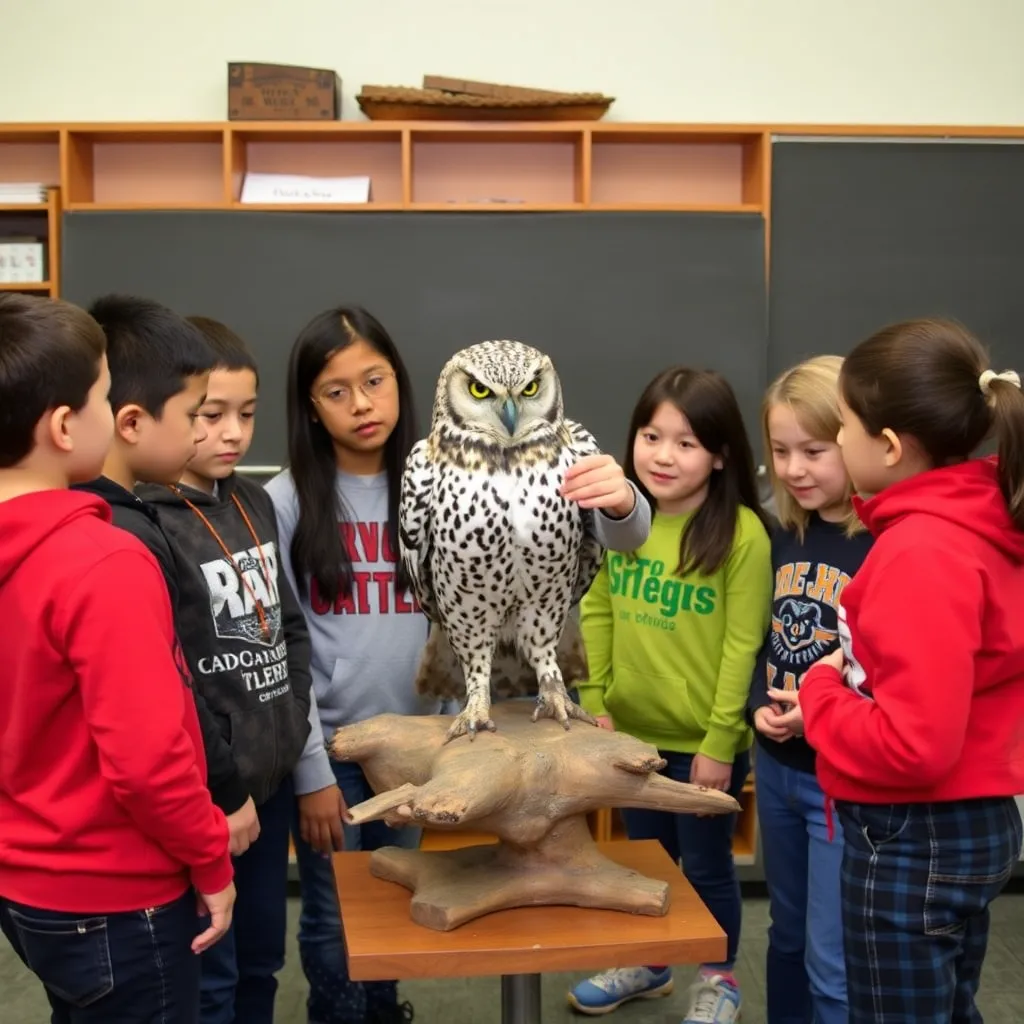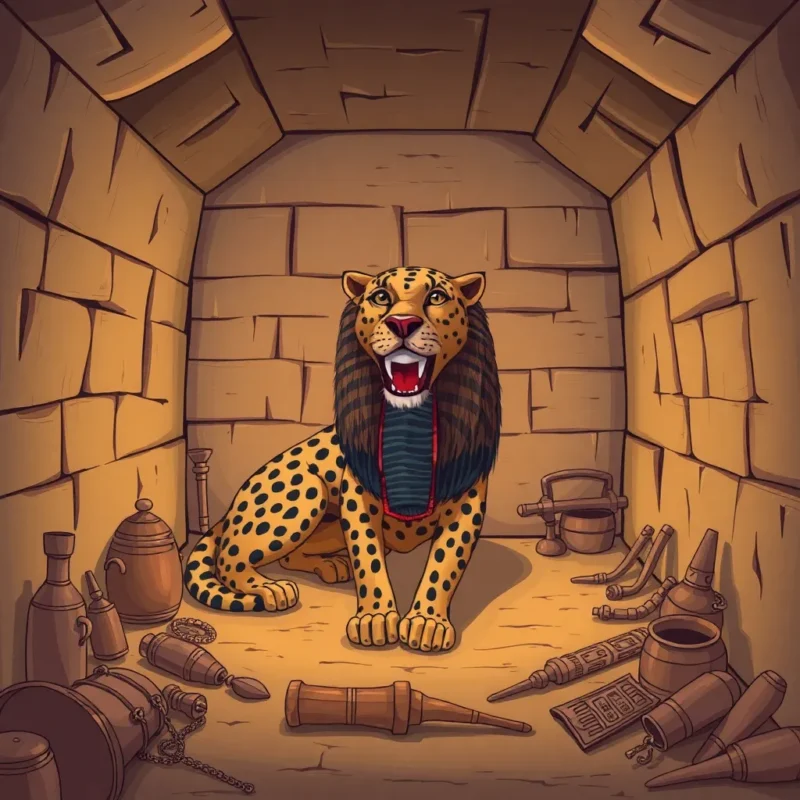Educational
Beyond the Cuddle Factor: The Fascinating History of Taxidermy in Science and Education
Taxidermy has been instrumental in facilitating scientific research, particularly in the fields of biology, ecology, and zoology. By preserving animal specimens, scientists can study their anatomy, behavior, and habitats in detail, gaining valuable insights into the natural world. For instance, taxidermied specimens have helped researchers understand the migratory patterns of birds, the social structures of mammals, and the adaptations of reptiles to their environments (American Museum of Natural History).
In addition to its role in scientific research, taxidermy has also played a crucial part in education. Mounted specimens have long been used in natural history museums and educational institutions to teach students about the diversity of life on Earth. By providing a tangible and engaging way to learn about different species, taxidermy has inspired generations of students to pursue careers in science, conservation, and environmentalism.
Furthermore, taxidermy has contributed significantly to conservation efforts. By studying preserved specimens, conservationists can identify threatened or endangered species, track changes in population dynamics, and develop effective strategies for protecting vulnerable ecosystems. Taxidermy has also helped raise awareness about the impact of human activities on the environment, promoting a greater appreciation for the importance of conservation and sustainability.
The Early Days of Taxidermy
The history of taxidermy is a long and fascinating one, with roots tracing back to ancient civilizations. In Egypt, for instance, taxidermied animals were often placed in tombs to provide companionship to the deceased in the afterlife. Similarly, in ancient Greece, stuffed animals were used as offerings to the gods in temples.
Despite its early origins, taxidermy didn’t become a widespread practice until the 18th century. During this time, scientists and naturalists began to recognize the value of preserving animal specimens for study and display. As a result, taxidermy became an essential tool for museums and scientific collections, allowing for the detailed examination and presentation of animal anatomy.
According to the American Museum of Natural History, the development of taxidermy during the 18th century was closely tied to the rise of natural history museums. As these institutions grew in popularity, the demand for well-preserved and lifelike specimens increased, driving the development of new taxidermy techniques and methods. Today, taxidermy remains an important tool for scientists, educators, and enthusiasts alike, providing a unique window into the natural world.

Taxidermy in Scientific Research
Taxidermy has played a crucial role in advancing our knowledge of animal anatomy, behavior, and evolution. The preservation and mounting of specimens allow scientists to examine the intricate details of an animal’s morphology, providing valuable insights into its physiological functions and adaptations. For instance, the study of mounted birds has helped researchers understand the structure and function of their respiratory systems, which are crucial for flight (National Center for Biotechnology Information).
Furthermore, taxidermy specimens have contributed significantly to the field of ecology, enabling scientists to study the behavior, habitat, and population dynamics of various species. By analyzing the physical characteristics and morphology of mounted specimens, researchers can gain a deeper understanding of the complex relationships between species and their environments. This knowledge is essential for developing effective conservation strategies and managing ecosystems (International Union for Conservation of Nature).
In addition, taxidermy has facilitated the discovery of new species and the reconstruction of evolutionary histories. By comparing the morphology of different species, scientists can identify patterns and relationships that inform our understanding of evolutionary processes. For example, the study of fossilized remains has revealed the evolutionary history of whales, which were once land-dwelling mammals (National Geographic).
Education and Conservation
The use of taxidermy in educational settings has been instrumental in providing students with a unique and interactive learning experience. By allowing students to engage with preserved specimens, taxidermy enables a hands-on approach to learning about the natural world, fostering a deeper understanding and appreciation of the complexities of biology and ecology. This approach has been shown to be particularly effective in capturing the attention of students and promoting a sense of wonder and curiosity about the natural world (American Museum of Natural History).
Beyond the classroom, taxidermy has also played a vital role in conservation efforts. By creating lifelike representations of endangered species, taxidermy helps to raise awareness about the importance of conservation and promote habitat preservation. This is particularly important in the context of species that are difficult to observe in their natural habitats, such as nocturnal or elusive animals. Through taxidermy, conservationists can educate the public about the plight of these species and inspire action to protect them (International Union for Conservation of Nature).

Modern Taxidermy: A Blend of Art and Science
The art of taxidermy has undergone a significant transformation over the years, evolving from a crude and often unconvincing practice to a sophisticated craft that demands a high level of skill and expertise. Today’s taxidermists are not only knowledgeable about anatomy and biology but also possess a keen eye for detail and a deep understanding of the principles of art and design.
The use of advanced materials and techniques has enabled modern taxidermists to create mounts that are remarkably lifelike, with intricate details and textures that mimic the natural world. This attention to detail has led to a blurring of the lines between reality and artifice, making it increasingly difficult to distinguish between a taxidermied specimen and a living creature.
According to the National Taxidermists Association, the key to creating a convincing mount lies in the ability to accurately recreate the subtle nuances of life, from the glint in an animal’s eye to the subtle folds of its skin. By combining artistic flair with scientific precision, modern taxidermists are able to create truly breathtaking works of art that not only educate but also inspire and captivate.

Conclusion: Beyond the Cuddle Factor
Taxidermy’s rich history dates back to ancient civilizations, where it was used to preserve and honor animals. In the Middle Ages, taxidermy played a crucial role in the development of natural history museums, allowing scientists to study and classify species. According to the American Museum of Natural History, these early collections laid the foundation for modern zoology and ecology (https://www.amnh.org/learn/natural-history-museums).
During the 18th and 19th centuries, taxidermy became an essential tool for scientists like Charles Darwin and Alfred Russel Wallace, who used preserved specimens to develop their groundbreaking theories of evolution. The art of taxidermy also enabled the creation of lifelike dioramas, which helped to educate the public about the natural world and promote conservation efforts.
In modern times, taxidermy continues to play a vital role in conservation. By preserving and studying specimens, scientists can gain valuable insights into the biology and behavior of endangered species. For example, the International Union for Conservation of Nature (IUCN) uses taxidermy specimens to monitor population trends and develop effective conservation strategies (https://www.iucn.org/theme/species/our-work/taxonomy-and-systematics).
As we move forward in the face of pressing environmental challenges, the significance of taxidermy extends beyond its historical importance. By embracing this unique blend of art and science, we can foster a deeper appreciation for the natural world and inspire future generations to take action in protecting our planet’s precious biodiversity.

